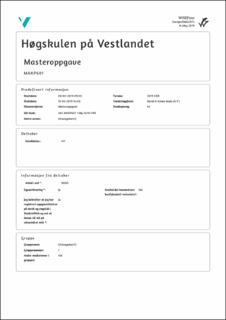| dc.description.abstract | Background: Depression is a common mental health problem in dolescents with a one-year prevalence estimate of 5.6% among 13-18-year olds. It can cause problems at school, with friends, and in the family and may have adverse effects on educational attainment and later employment status. Objective: The objective of this systematic review was to examine the effects of exercise interventions as treatment of depression in children and adolescents compared to other treatments or no treatment. Methods: The bibliographic databases Cochrane Central Register of Controlled Trials (CENTRAL), Medline (Ovid), Embase (Ovid), PsycINFO (Ovid), AMED (Ovid), SPORTDiscus, PEDro, CINAHL (EBSCO), ERIC (EBSCO) and Web of Science were searched from inception to December 2018, in addition to grey literature, ongoing and unpublished trials. Trials were included if they were randomized controlled trials of exercise interventions for children and adolescents 6-18 years with depression. Two authors independently screened references, extracted data and assessed the quality of the included trials with the Cochrane Risk of Bias tool. The certainty of the evidence was assessed using GRADE. Results: Of 11007 retrieved references, four trials were included (n=143). Meta-analysis was conducted using a random-effects model on the outcome of depression post-intervention and found a moderate effect in favour of exercise in adolescents (SMD= -0.59, 95% CI= -1.11, to -0.07). The trials had a low number of participants and were assessed as having an unclear or high risk of bias. The certainty of the evidence was graded as low. None of the trials commented on the presence or absence of adverse events. Conclusion: Exercise appears to be a promising intervention for children and adolescents with depression.However, large, high-quality trials with longer follow-up time are needed. | en_US |

